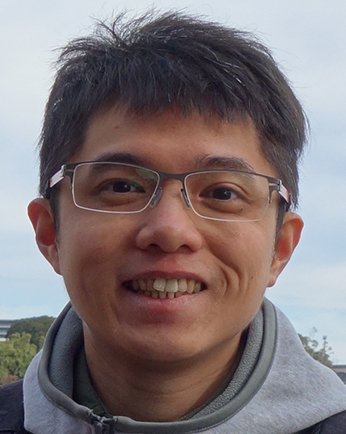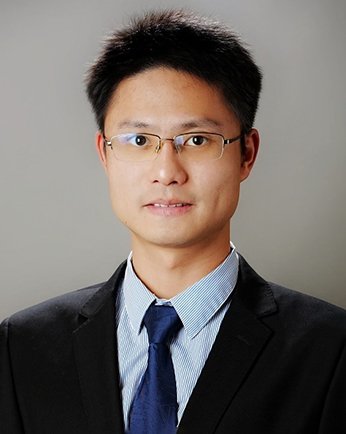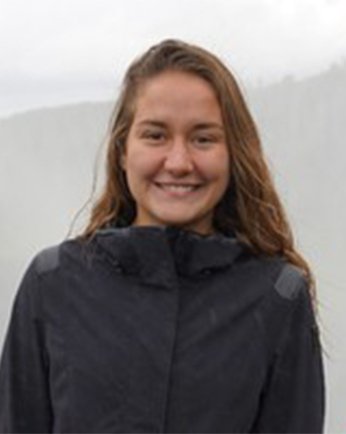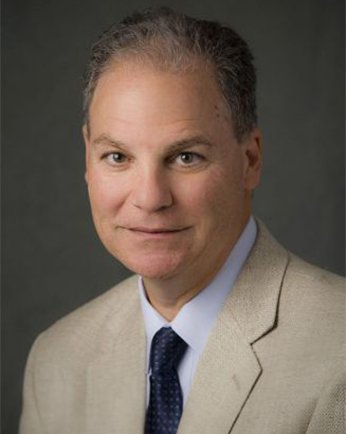Session Abstracts:

Graduate Student Researcher
UCLA
Hercules 2.0: A Powerful Regional Earthquake Simulator with Expanded Capabilities
Co-Authors: Wenyang Zhang (Texas Advanced Computing Center), Kubilay Albayrak (Middle East Technical University), Jorge Crempien (Pontificia Universidad Católica de Chile), and Ertugrul Taciroglu (UCLA)
Abstract: Hercules is an octree-based finite element earthquake simulator originally developed by the Quake Group at Carnegie Mellon. However, the development has been paused for years, and the developer team left no usable documentation for Hercules. To revive the powerful Hercules, the author has implemented a general 3D velocity model and PROJ support, provided post-processing tools, and decluttered the source code. Despite its value, we acknowledge the challenges of getting started with Hercules. To address this, the author has written the first documentation for Hercules, removed unused input parameters, and made Hercules more user-friendly. In this presentation, an example of the 2020 Samos Earthquake will be shown to demonstrate the improvements in the current iteration of Hercules over the original version, including the improved Goodness-of-Fit thanks to the ability to customize the velocity model, a reduced number of required input parameters, and useful tools for post-processing.

Postdoctoral Scholar
The Ohio State University
Deep Learning-based Digital Twin Models for Real-time Monitoring of Onshore Wind Turbines
Co-Authors: Abdollah Shafieezadeh (The Ohio State University)
Abstract: Wind turbines are crucial in advancing renewable energy, offering sustainable and efficient power generation. However, these systems are often exposed to extreme natural hazards which pose significant risks to their structural integrity. Comprehensive monitoring of these complex systems remains a significant challenge due to extensive instrumentation required, which is economically impractical on a large scale. The limited observational data further complicates the decision-making process, often hindering the early detection and diagnosis of potential issues.
To address these challenges, this study introduces an innovative digital twin framework designed to enhance state estimation for onshore wind turbines using sparse and noisy measurement data. Our approach leverages model-based deep learning techniques, integrating a linear state-space model with the Cholesky KalmanNet algorithm—a deep learning-augmented Kalman filter that we developed to overcome the limitations of traditional Kalman filters when applied to nonlinear systems and imperfect state-space models.
The proposed methodology is demonstrated through a case study utilizing a wind turbine model, where limited measurement inputs are available. Performance is assessed by computing the relative errors in the estimated states, with preliminary results indicating that our algorithm significantly outperforms existing state-of-the-art methods proposed by the National Renewable Energy Laboratory (NREL).
This study highlights the potential of digital twins in enhancing wind turbine resilience, particularly in the context of natural hazards. By advancing state estimation techniques, this research provides a foundation for improving wind turbine operation and maintenance strategies under extreme conditions, contributing to the broader goal of creating more sustainable and reliable renewable energy systems.

Graduate Student Researcher
University of Illinois at Urbana-Champaign
Innovative Research Workflow for Seismic Design Provisions Development
Co-Authors: Larry Fahnestock (University of Illinois Urbana-Champaign)
Abstract: Current research workflows for seismic building assessment often involve design of archetypes and nonlinear analysis using multiple software platforms and manual data handling, leading to inefficiencies and the potential for errors. This presentation introduces an innovative, fully integrated workflow for building seismic design and assessment research, leveraging high-performance computing (HPC) capabilities within the DesignSafe Cyberinfrastructure (CI). The workflow utilizes Jupyter Lab HPC on Frontera RTX nodes for seismic design and parallel nonlinear analysis with OpenSeesMP, eliminating the need for data transfers between different platforms. This streamlined process not only saves time but also reduces the risk of duplicating information and minimizes errors that occur when data is modified in one system but not updated in another.
We will demonstrate applications of this workflow, including selected results from recent studies on steel special moment frames that are contributing to evaluation and enhancement of current seismic design provisions. By conducting all stages of analysis—from model creation to nonlinear response analysis—within a single, cohesive environment, this approach promotes more reliable and efficient seismic design practices. This workflow represents a significant advancement in computational simulation methodologies for investigating the nonlinear behavior of building structures, enhancing the robustness of research outcomes and ultimately contributing to the development of improved seismic design provisions.

Graduate Student Researcher
UCLA
Validated numerical modeling of coastal groundwater variability and response to tides and sea level rise at Cardiff State Beach
Co-Authors: Timu Gallien (University of California Los Angeles), Meera Kota (University of California Los Angeles), and Scott J. Brandenberg (University of California Los Angeles)
Abstract: shallow groundwater hazards. Typically, regional groundwater models omit tides and only consider a steady state marine water level. Tidal water level fluctuations propagate into beach water tables and periodically shallow groundwater. Here, PFLOTRAN, an open-source highly parallelizable multiphase flow and reactive transport model which resolves variably saturated flow is applied at Cardiff State Beach in Southern California to quantify variability imparted by tides and sea level rise. An unstructured mesh resolves rapidly variable beach topography along with seepage face formation. The model is validated using pressure measurements from buried pressure sensors. Subsequent to validation, expected groundwater variability is quantified using 1-year water level time series created from the nearest tide gauge (La Jolla) tidal harmonics. A Docker image is created to containerize PFLOTRAN, allowing ease of use across computing resources. The groundwater model is then run on the Frontera supercomputer hosted at the Texas Advanced Computing Center (TACC). 3D modeled pore pressures are compared to a suite of 19 2D modeled cross-shore transects spaced every 100m along the beach. The model is then used to examine future sea level rise impacts.

Graduate Student Researcher
Lehigh University
RTHS of a 3 story MRF-DBF frame with soil-structure interaction using neural networks
Co-Authors: Davide Noe Gorini (University of Trento) and James Ricles (Lehigh University)
Abstract: Real-time hybrid simulation (RTHS) is a technique that enables the researchers to assess the structural response when accurate analytical models are not available. RTHS involves modelling the analytical substructure numerically and the complex elements physically and solving the resulting equations of motions in real-time to get the structural response. A major challenge in RTHS is to account for soil-foundation-structure interaction (SFSI) effects. SFSI has a substantial effect on the response of a structural system, especially the response modification devices. However, modeling SFSI in RTHS is complex due to the large size of the soil domain, making experimental modeling impractical. Numerical modeling of the soil domain is also challenging due to the large number of elements and degrees of freedom, making RTHS computationally prohibitive. To address these limitations, the present study focuses on RTHS for complex systems under seismic hazards, incorporating SFSI through neural network (NN) models. A three-story building with moment resisting and damped braced frames is modelled numerically and the nonlinear viscous dampers are modelled experimentally. Effects of soil-structure interaction are incorporated into the RTHS by modelling the soil domain using NN models. This approach allows the computations to be done in real-time thus making the RTHS possible. The training data for the NN model is generated using OpenSees fully coupled SFSI model, and the NN is trained in Python using TACC HPC resources. The presentation will give an overview of the RTHS configuration, the NN model framework, illustrate the use of the TACC HPC resources to train and validate the NN model, and the implementation of the NN model into the RTHS framework and application. The results show that the NN model is fast and accurate when compared to the OpenSees continuum model of the soil, making such RTHS possible.

Professor
Lehigh University
Neural network aided real-time model updating of digital twins in Real-Time Hybrid Simulations
Co-Authors: Faisal Nissar Malik (Lehigh University), Liang Cao (Lehigh University), Austin Downey (University of South Carolina), and Simon Laflamme (Iowa State University)
Abstract: RTHS involves modelling an analytical substructure numerically and the complex elements physically, solving the resulting equations of motions in real-time to obtain the structural response. Limitations in laboratory setups restrict the number of experimental substructures, challenging the simulation's accuracy. To address these challenges, this study introduces a neural network (NN) model aided real-time model updating of digital twin numerical substructures in an earthquake RTHS. A two-story steel structure equipped with two banded rotary friction dampers (BRFDs), one in each story, is selected as the prototype. BRFDs are challenging to model analytically, and existing analytical models often produce suboptimal results. The BRFD in the top story is modeled experimentally, while the BRFD in the bottom story is represented by a digital twin created using a NN model. The NN model uses real-time data from the top story experimental substructure to accurately model the behavior of the digital twin model of the damper in the bottom story using real-time model updating. The NN models are trained using high-performance computing (HPC) resources from TACC, enabling rapid training and evaluation. A Python-based NN model and Simulink-based numerical substructure model are connected in real time using SCRAMNet to ensure low-latency communication between the two systems. The presentation will give an overview of the RTHS configuration and illustrate the use of TACC HPC resources to train and validate the digital twin NN model. The RTHS results demonstrate that the digital twin NN model with real-time model updating yield a highly accurate representation of the experimental damper.